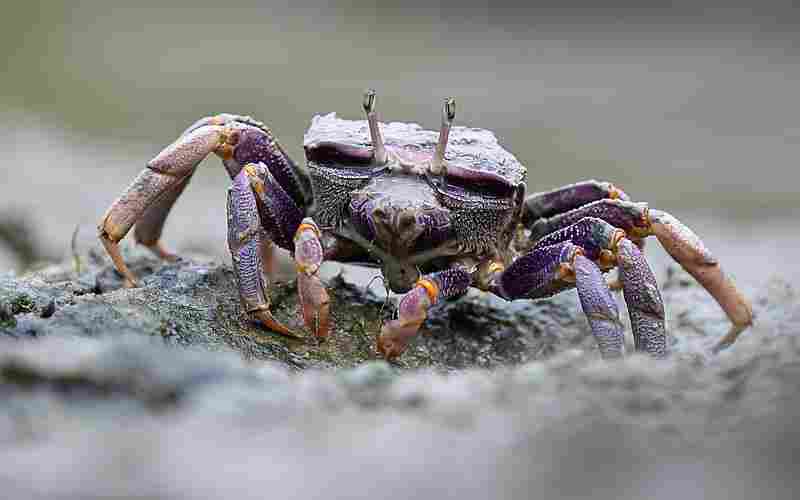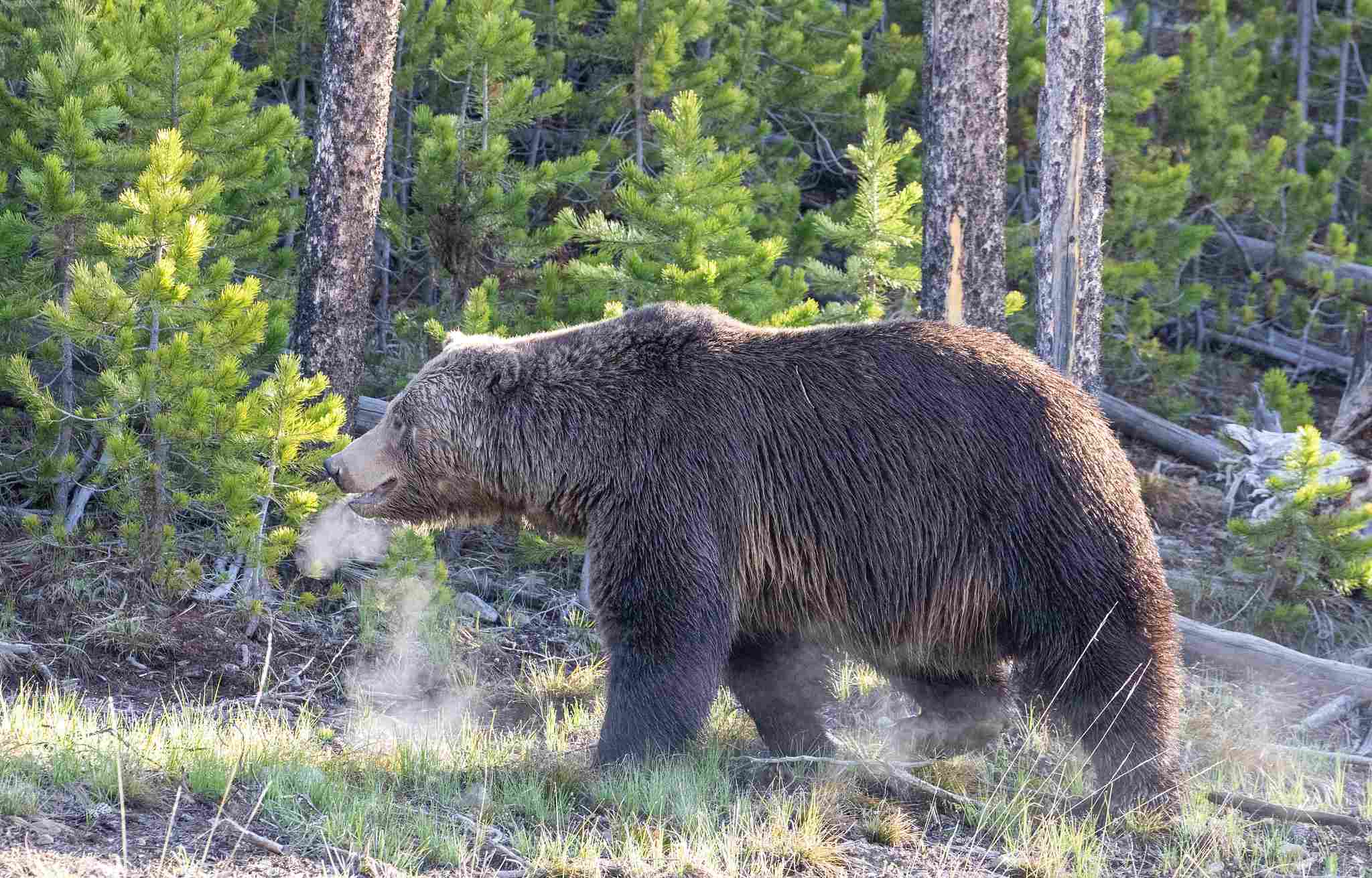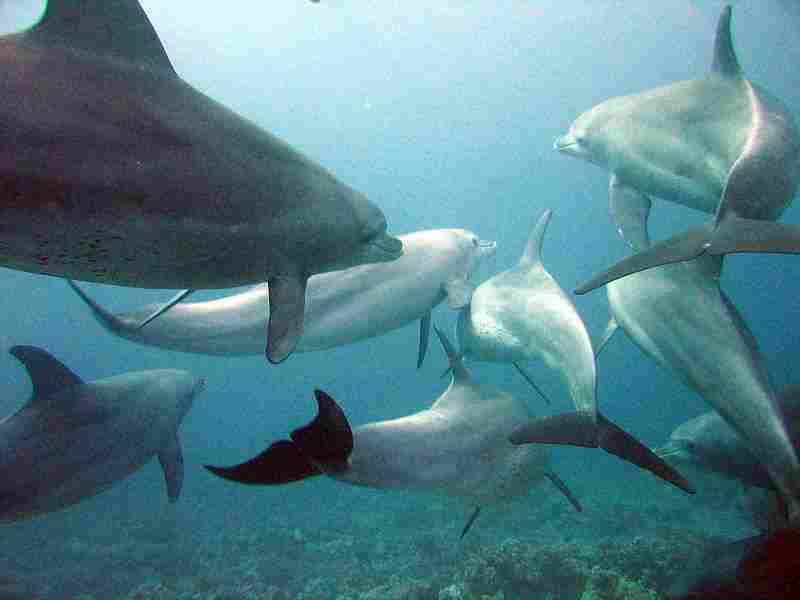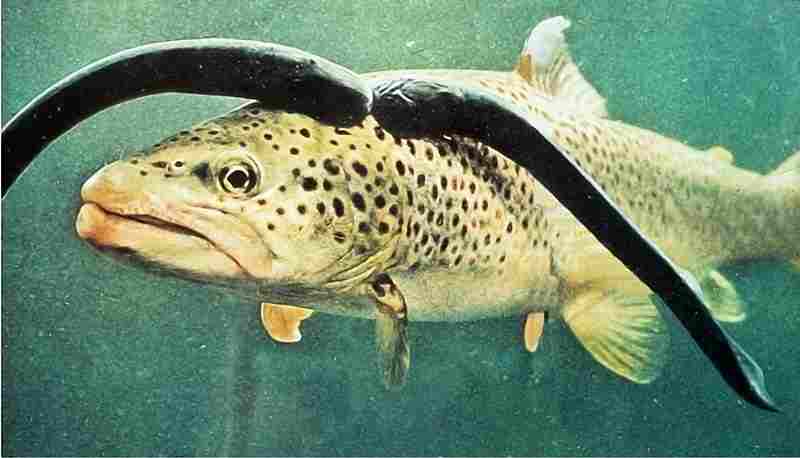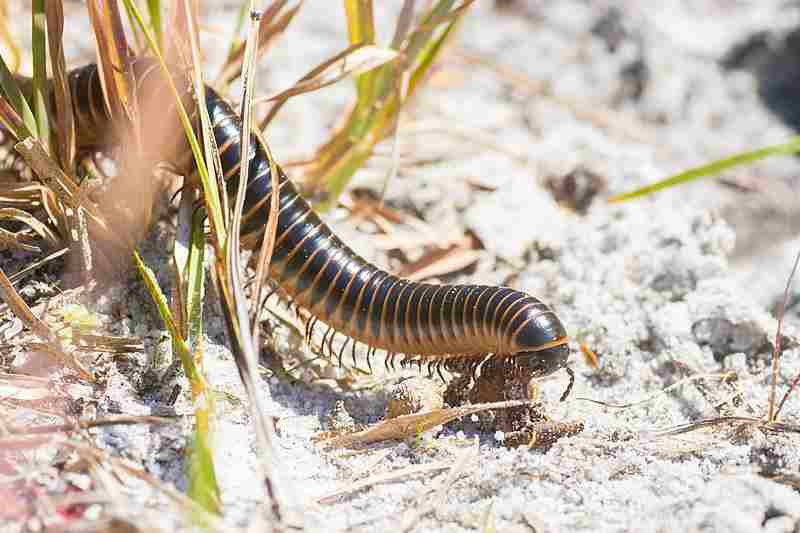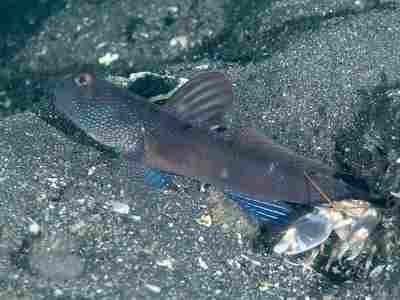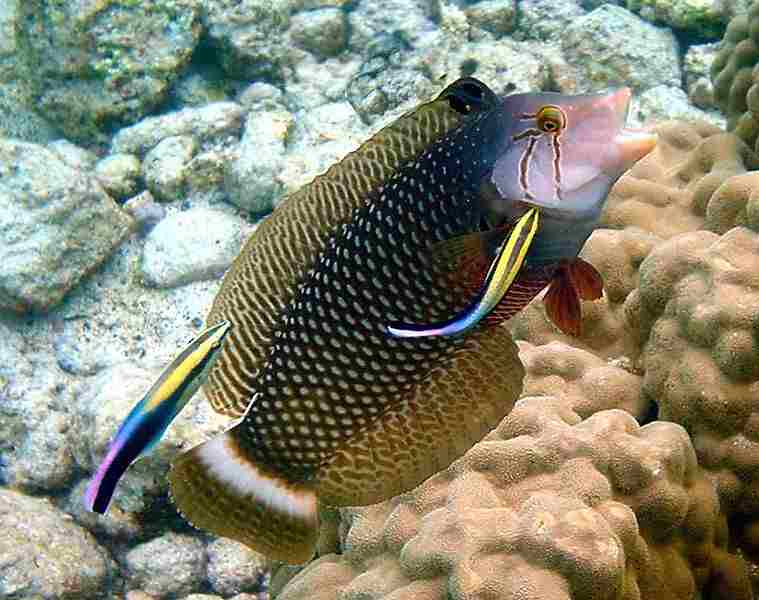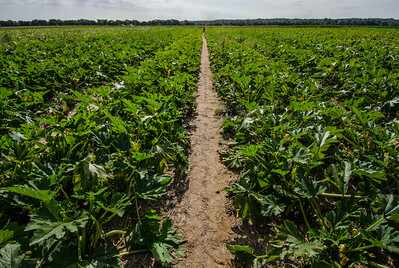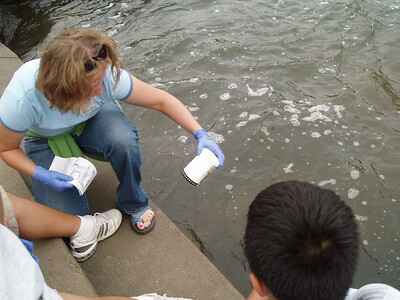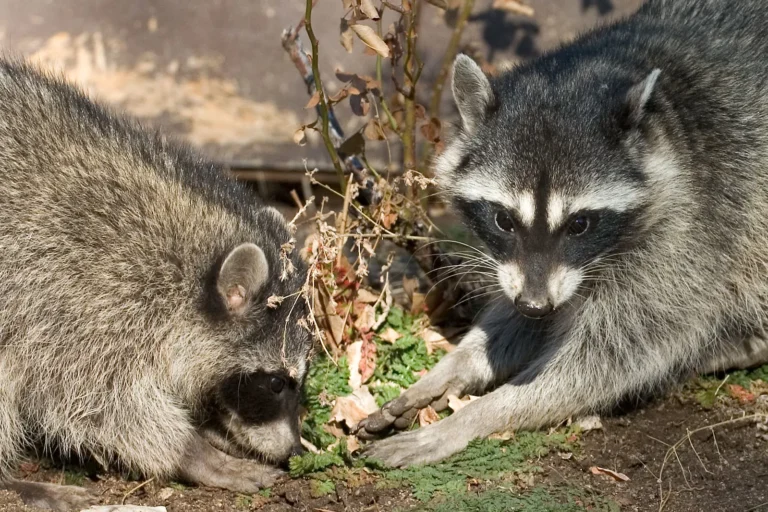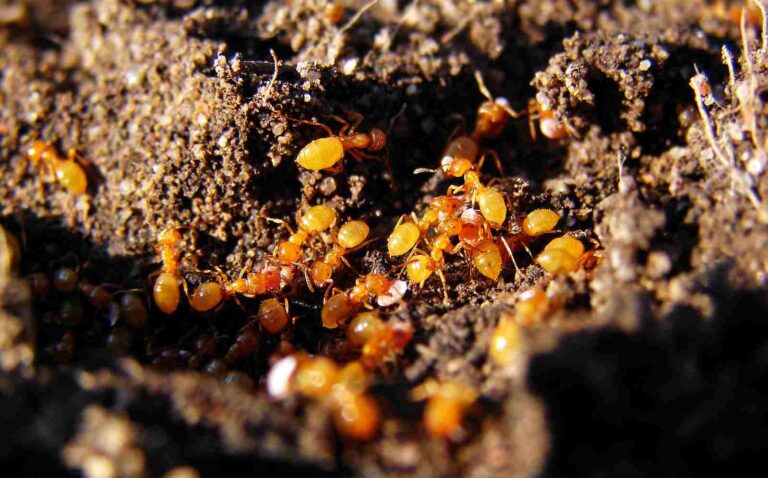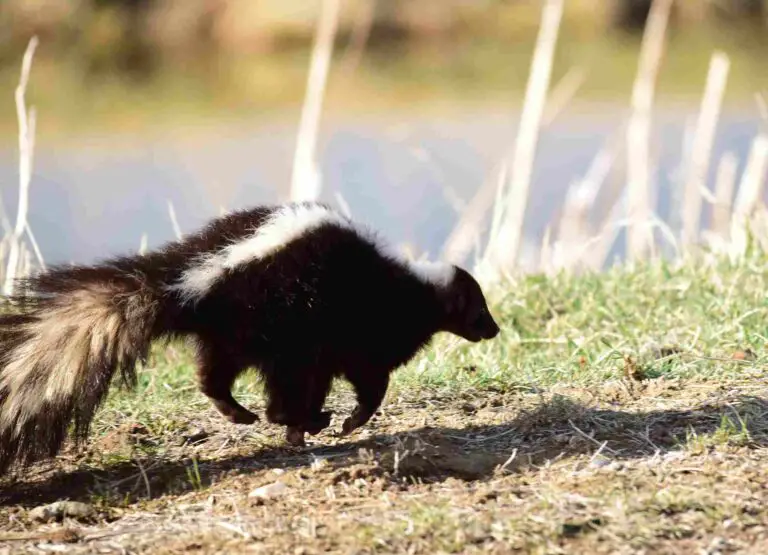11 Rocky Shore Biotic Factors and Their Importance
Rocky shore biotic factors are; autotrophs, herbivores, carnivores, omnivores, decomposers, mutualism, commensalism, parasitism, predation, competition, and adaptation.
This article discusses rocky shore biotic factors and their importance, as follows;
1). Autotrophs on Rocky Shores (as one of the Rocky Shore Biotic Factors)
Autotrophs, also known as primary producers, play an effective role in the rocky shore ecosystem.
They are biotic components of their environment, and responsible for converting inorganic raw materials and solar energy into food through the processes of photosynthesis. In the rocky shore ecosystem, autotrophs are represented by various species of photosynthetic organisms.
Importance of Autotrophs in the Rocky Shore Ecosystem
Autotrophs in the rocky shore ecosystem are important for their roles in primary production, habitat structuring, food provision, oxygen production, and general nutrient cycling.
Primary production is a core function of autotrophs in the rocky shore ecosystem. These organisms serve as the foundational source of organic matter (biomass) and energy (bioenergy) for the entire food chain.
Through photosynthesis, autotrophs convert light energy from the sun, alongside carbon dioxide and water; into organic compounds, thereby forming the basal resource for other organisms to survive upon.
Autotrophs, including halophytes such as seaweeds, contribute to the physical structure and microhabitat assemblage, of the rocky shore habitat [17].
These autotrophs attach to rocks and create complex, three-dimensional structures that provide shelter, anchorage points, and hiding places for various local organisms. The physical structure provided, enhances species richness/biodiversity and provides ecological niches for species.

Autotrophs serve as a direct food source for some herbivorous organisms in the rocky shore ecosystem. Grazing marine snails like limpets, and other mollusks, for instance, feed on algae and seaweeds. These herbivores, in turn, serve as prey for organisms in higher trophic levels, such as carnivorous crustaceans.
Autotrophs contribute to the sustainability of the oxygen cycle in rocky shores. In the process of photosynthesis, autotrophs release oxygen as a byproduct [13]. This oxygen production is critical for the respiration of several organisms in the rocky shore ecosystem, including those that inhabit tidal pools and other oxygen-depleted zones.
Recycling of nutrients is also supported by autotrophs within the ecosystem. They actively take up nutrients from the surrounding sediments and water, incorporate them into their tissues, and subsequently release them back into the ecosystem when they are consumed, die (and decompose), or shed parts of their structure.
Overview of Autotrophs and Other Organisms in the Rocky Shore Ecosystem
Autotrophs are biotic factors because they are living organisms that are actively involved in the ecological processes of their environment. They are therefore one of the biological components of the ecosystem.
Organisms in rocky shore habitats include; seaweeds, lichens, phytoplankton, benthic algae, limpets, barnacles, sea squirts, anemones, intertidal corals, as well as various intertidal fish species.
The specific composition of species in a given shore habitat, can vary depending on factors such as the geographic location, and the availability of resources like food and microhabitat.
2). Herbivores on Rocky Shores
Herbivores also constitute an important biotic component of the rocky shore ecosystem, and are involved in structuring the diversity and physicochemical conditions of this environment.
These organisms, which primarily consume autotrophic biomass from organisms like algae and seaweeds, are key contributors to the intricate food webs and diverse ecological relationships of the rocky shore ecosystem.
Importance of Herbivores in the Rocky Shore Ecosystem
The importance of herbivores in the rocky shore ecosystem is based on their involvement in algae and seaweed control, maintenance of biodiversity, habitat engineering, energy transfer, and ecosystem sustenance.
Herbivores like limpets and some sea slugs, are responsible for regulating the populations of primary consumers such as encrusting algae and seaweeds on rocky shores [16]. In the absence of herbivores, these autotrophic organisms would overgrow and dominate the habitat. Such overgrowth and overpopulation can foster intense and unhealthy competition that reduces overall biodiversity.

By controlling algal and seaweed growth, herbivores help create niche opportunities for other species. This supports the establishment of a more diverse community of organisms that coexist within the rocky shore habitat.
Various species of herbivores may have different preferences for certain types of seaweeds or algae, such that their selective feeding significantly impacts biodiversity.
Herbivores also indirectly contribute to habitat engineering.
One of the ways by which they do this is by preventing excessive algal growth. This function helps to maintain the physical structure of the rocky shore habitat, and provides anchorage points (on sediments) for other organisms. The rocky substrate becomes more accessible for colonization by non-autotrophic, sessile organisms like barnacles and anemones.
By reason of their ecological position, herbivores function as an energy bridge that links primary producers (autotrophs) to organisms in higher trophic levels of the food web.
They consume biomass from autotrophic organisms, and transfer this resource upward in the ecologic hierarchy when they become prey for carnivorous organisms like whelks and starfish. This flow of energy is required for the continued functioning of the entire ecosystem.
The presence and activities of herbivores help to maintain a favorable state of ecological equilibrium within the rocky shore habitat. These organisms prevent the overgrowth of autotrophs, which can result in oxygen depletion and extensive habitat degradation.
Overview of Herbivores in the Rocky Shore Ecosystem
Some effects of herbivores on the rocky shore ecosystem include regulation of algal and seaweed populations, maintenance of biodiversity, habitat engineering, facilitation of energy transfer through the food chain/web/energy pyramid, and contribution to overall ecosystem continuity.
The relationship between herbivore biomass and beach slope is a spatially variable relationship, where the abundance of herbivorous organisms changes along the slope, under the influence of factors like autotroph distribution and abiotic stressors [5].
This implies that the biological success of herbivores depends on the trends and influences of abiotic factors in a rocky shore ecosystem. It is also true for related habitats like deep marine ecosystems and coral reefs.
Herbivore biomass tends to be greatest on gently sloping shores, which implies that beach slope can affect the availability of resources and the patterns of biotic interactions, such as competition for space and food among herbivores.
The interactive effects of grazing by limpets and substratum inclination on the rocky shore, are mostly concerned with rate of consumption, which is influenced by the locomotion of limpets across inclined substrata; and these effects can occur in the form of localized overgrazing, and spatial variability of consumption rate.
3). Carnivores on Rocky Shores (as one of the Rocky Shore Biotic Factors)
Carnivores are a critical biotic factor in the rocky shore ecosystem.
Like other biotic factors, they are pivotal role to the temporal trends, and long-term functionality of this habitat.
Carnivorous organisms are positioned in the upper portion of the rocky shore food chain, and prey on various other species, including herbivores, scavengers, and vulnerable fellow carnivores. The presence and activities of carnivores have significant implications for the rocky shore ecosystem as a whole.
Examples of carnivores on rocky shores are; waratah sea anenome (Actinia tenebrosa), dogwhelk (Nucella lapillus), green crab (Carcinus maenas), and multiple species of starfish (including Asterias Rubens).
Among these organisms it must be noted that the green crab is a foraging, predatory omnivore (rather than an exclusive carnivore), but is listed here for its immense contribution to predation processes in the rocky shore habitat as a whole.
Specific members of the carnivore community tend to vary from one rocky shore location to another; for example, from Arctic to Antarctic shores. They are generally littoral in their habitat preference.

Importance of Carnivores in the Rocky Shore Ecosystem
The importance of carnivores in the rocky shore ecosystem, can be traced to their multiple roles in population control, biodiversity maintenance, energy transfer, selective pressure-exertion; and ecosystem sustenance.
Populations of lower organisms are controlled by carnivores on rocky shores.
By preying on these species, carnivores help to prevent their overabundance, which can lead to negative consequences; such as resource depletion through overgrazing by autotrophic organisms or excessive consumption of detrital resources by scavengers. This population control effect, ensures that balance is maintained within the ecosystem.
Biodiversity is also maintained as a result of carnivorous activities in the rocky shore ecosystem. By keeping lower populations in check, carnivores prevent the dominance of a single or few species. This supports the coexistence of diverse organic groups with different ecological functions and niches, and enhances overall biodiversity and vitality of the ecosystem.
Carnivores are essential for the continuity of energy transfer through the various levels of the food web. They contribute by converting the energy and nutrients stored in the body parts of prey, into their own biomass, and by subsequently making this energy available to other trophic levels, which could be occupied by larger predators, or autotrophs that take up nutrients from decomposed organic matter.
Selective pressure is exerted by carnivores on their prey populations. This selective pressure can contribute to the development of specialized adaptive features in prey species, such as defensive behaviors, camouflage, or escape and avoidance mechanisms.
Over extended periods of time, progressive adaptation on both sides can facilitate the coevolution of predators and prey [11], which further modifies the rocky shore ecosystem.
As already implied, carnivores exercise top-down control on the rest of the ecosystem, by influencing the abundance and spatial distribution of species that occupy trophic levels below them. This form of control cascades through the entire food web, impacting the rocky shore community and even the physical structure of the habitat.
Lastly, carnivores can serve as indicators of the health and equilibrium of the ecosystem. Their abundance and activity patterns often reflect the availability of prey species and the overall wellbeing of the ecosystem. A decline in carnivore populations can be therefore be a warning sign of ecosystem imbalances and/or degradation.
4). Omnivores on Rocky Shores
Omnivores are organisms that have a diverse, flexible diet and can consume both plant and animal matter. They are also a vital and indispensable biotic component of the rocky shore ecosystem.
Omnivores play a multifaceted role in maintaining the ecological equilibrium and functioning of their habitat. Some aspects of this role are discussed in the subsection below.
Importance of Omnivores in the Rocky Shore Ecosystem
The importance of omnivores to the rocky shore ecosystem can be understood in terms of nutrient cycling, energy transfer, population control, and contributions to ecosystem resilience, species interactions, and adaptation.
Nutrients are recycled through the activities of omnivores within the rocky shore ecosystem.
These organisms may feed on various organic materials, including detritus, carrion, prey, and plant matter. In the process, they break down complex organic molecules into simpler forms, and help release essential nutrients back into the ecosystem (in their wastes and biodegradable remains). This recycling mechanism is critical for the growth of autotrophic organisms like algae, vascular and non-vascular plants.
Omnivores bridge the gap between different trophic levels in the food chain of the rocky shore ecosystem.
They are intermediate consumers that acquire energy from both autotrophic (producers) and other heterotrophic (consumers) organisms. Omnivores are able to transfer energy from primary producers to higher-level consumers with significant efficiency, thereby contributing to the overall energy flow within the ecosystem.
Because of their predatory tendencies, omnivores help regulate heterotrophic populations by consuming both plant matter and smaller animals. This regulatory function prevents herbivores from overgrazing on (and depleting) autotrophic organisms such as seaweeds and algae. Maintaining herbivore population size at sustainable levels, therefore ensures the wellbeing and continuity of autotrophic communities on the shore.
The ability of omnivores to switch between plant and animal food resources, enables them to adapt effectively to changing ecological conditions and availability of prey [1]. This kind of flexibility is advantageous in the unpredictable, continuously changing, rocky shore ecosystem.
Rocky shore habitats owe much of their ecologic resilience to omnivorous species.
These omnivores enhance the resilience of the ecosystem by participating in the processes of multiple trophic levels, which they link and synchronize by means of their activities. In times of environmental stress or food scarcity, their flexible diet can serve as a buffer, enabling them to survive and continue their role as energy conduits, within the ecosystem.
Rocky shore omnivores are distinctive for engaging in complex species interactions. They may function as both predator and prey, and influence the behavior and living conditions of other organisms. These complex interactions contribute to the overall diversity and community structure of the rocky shore.
Lastly, several omnivorous species have developed specific adaptations, such as specialized mouthparts, renal systems, or digestive enzymes, which are used to efficiently process both plant and animal matter. These adaptations are indicative of the dynamic coevolution that occurs between omnivores and their food sources.
5). Decomposers on Rocky Shores (as one of the Rocky Shore Biotic Factors)
Decomposers are a critical biotic component of the rocky shore ecosystem, due to their central role in breaking down organic matter and recycling nutrients.
This section discusses the significance of decomposers in the coastal rocky shore habitat.
Examples of decomposers rocky shores are; bacteria, fungi, and detritivores like fiddler crabs.
Importance of Decomposers in the Rocky Shore Ecosystem
Decomposers are primarily composed of microorganisms like fungi and bacteria, and facilitate the breakdown of organic material, including remains and wastes of plants and animals.
Through the process of decomposition, these organisms convert complex organic molecules into simpler products, and release essential nutrients such as nitrogen, carbon and phosphorus, back into the ecosystem.
These nutrients then become available for uptake by autotrophic organisms like algae and vascular plants.
Waste in the form of organic debris and animal/plant remains, are efficiently disposed of by decomposers, which prevent these materials from accumulating on rocky shores. In the absence of decomposers, organic waste would persist, leading to nutrient imbalances, pathogen growth, and potential habitat degradation.
Like other biotic factors, decomposers are essential for maintaining the flow of chemical energy within the shore ecosystem.
They release stored energy in the form of chemical compounds from organic raw materials, which then becomes available to other organisms in the food web, including herbivores, omnivores and carnivores, thereby contributing to the energy dynamics of the entire ecosystem.
Another function that can be attributed to rocky shore decomposers is detoxification: Decomposers are instrumental in detoxifying the environment by breaking down compounds in organic matter that are potentially harmful.
This detoxification process helps to prevent the persistence and accumulation of toxins, maintaining a healthier environment for other species. It is exploited in remediation projects for shores that have experienced pollution by degradable materials like hydrocarbons [14].
Detritivores, organisms that feed on organic detritus, rely on microbial decomposers to start the breakdown process. The microbial decomposers soften and partially-digest organic material, making it more palatable for detritivorous organisms such as scavenging crustaceans.

Species of bacteria and fungi form diverse microbial communities in the rocky shore environment. These communities collectively drive the process of nutrient cycling, and contribute to the overall biodiversity of the ecosystem.
Overview of Decomposers and Influential Biotic Factors in the Rocky Shore Ecosystem
Decomposers in the Rocky Shores: Decomposers in rocky shores include microorganisms like bacteria and fungi that degrade and recycle organic waste materials, as well as detritivores like fiddler crabs that consume partially-degraded biomass.
Biotic factors affecting organisms on a rocky shore include predation, herbivory, competition for resources, mutualism, parasitism, intraspecific and interspecific competition, food availability, as well as predation pressure; all of which determine the biological performance and distribution of intertidal species.
6). Mutualism in the Rocky Shore Ecosystem
Mutualism is a biotic factor in the rocky shore ecosystem, and can be described as a scenario where various organisms engage in mutually beneficial interactions.
The importance of mutualism in shore habitats is discussed in this section.
Importance of Mutualism in the Rocky Shore Ecosystem
Mutualism is important in the rocky shore ecosystem, for its contributions to nutrient cycling, provision of shelter, access to resources, adaptation, organic survival, and ecological resilience.
In the rocky shore ecosystem, mutualistic relationships often involve organisms such as algae and anemones.
For example, certain species of anemones host photosynthetic, unicellular algae (zooxanthellae) within their body tissues [7]. These algae utilize light from the sun to carry out photosynthesis, thereby producing oxygen and organic compounds.
In return for shelter and protection, the anemones receive nourishment from the products of algal photosynthesis. This mutualistic exchange facilitates nutrient cycling, as both partners benefit immensely from each other's metabolic activities.

As exemplified with the anemone and algae, mutualistic interactions in rocky shores often involve organisms offering protection or shelter to their partners in exchange for any of various benefits.
In another instance, some intertidal and shore-dwelling hermit crabs may take refuge in gastropod shells, to which the sea anemone may be attached. Here, the crab provides mobility and food accessibility to the anemone, which in turn protects the crab from predators using its stinging nematocysts [3].
Access to essential resources for many rocky shore organisms, is increased through mutualistic relationships. In the near-shore environment, some species of small herbivorous fish may form mutualistic associations with cleaner shrimp.
These crustaceans remove parasites and debris from the fish's skin, benefiting from these materials as a food source, so that the fish enjoy improved hygiene and reduced parasite loads while providing mobility and food in return. This interaction allows both species to thrive by accessing resources with more efficiency and ease.
Mutualistic partnerships often foster the development of useful adaptations that enable organisms to thrive in challenging environments.
An example of such adaptations is the versatile light tolerance of anemones that host photosynthetic algae in rocky shore areas. The algae also adapt to life in anemone tissues, with both organisms improving their rate of survival and ecological success.
As the above discussion implies, mutualistic relationships contribute to the overall resilience of the rocky shore habitat. By enhancing the survival rate and growth efficiency of participating organisms, mutualism helps to maintain stability and biodiversity in the ecosystem. It ensures that species can adapt and persist in the face of diverse environmental impacts and ecologic hazards.
Examples of Mutualism in the Rocky Shore
Examples of mutualism in the rocky shore are;
1. Anemone-algae mutualism
2. Anemone-crab mutualism
These relationships involve the exchange of resources like food materials and shelter, between participating organisms.
7). Commensalism in the Rocky Shore Ecosystem (as one of the Rocky Shore Biotic Factors)
Commensalism is a type of symbiotic relationship, that contributes to the complex web of interactions occurring within the rocky shore ecosystem.
Importance of Commensalism in the Rocky Shore Ecosystem
In commensalism, one species usually benefits from the interaction without harming or significantly impacting another [18].
An example of commensalism on rocky shores is the attachment of barnacles such as Balanus (Family Balanidae) to the shells of snow crabs create a mutually beneficial arrangement, where the barnacles receive transportation to new feeding areas as the hermit crab moves, while the crab does not experience any adverse effect.
This adaptation allows these organisms to thrive in the dynamic and sometimes harsh conditions of rocky shores.
Commensal organisms can make efficient use of the resources provided by their host. In rocky shores, some small invertebrates and algae may attach themselves to larger organisms like mussels or sea anemones.
These smaller species benefit from access to elevated positions where they can better capture light for photosynthesis, or planktonic food particles. This arrangement enables them to optimize their resource utilization.
Commensalism can offer protection to participants, thereby reducing predation risk [15]. For instance, in intertidal zones, small fish may seek refuge among the spines of sea urchins or within the crevices of other large and defensive species. In these instances, the host organism provides a safe haven, while the commensal fish are protected from potential predators.
The resilience of the rocky shore ecosystem as a whole, is helped by commensalism. Commensal species are able to access resources and exploit specialized niches, with interactions that increase ecological success, biodiversity, and stability.
Summary of Environmental Factors of the Rocky Shore
Environmental factors of the rocky shore ecosystem that influence this habitat including; tidal variability, wave action, temperature dynamics, and salinity.
Rocky shores experience regular tidal fluctuations, which impact factors such as temperature, salinity, and exposure to sunlight and air.
The intensity of wave action can influence the physical characteristics of the rocky shore and control the distribution of species [2].
Due to their exposure, rocky shores are subject to temperature fluctuations that correspond with changing climatic and hydrological conditions, and can affect the physiology, metabolism and behavior of resident organisms.
The mixing of freshwater and seawater from adjacent sources can lead to variations in salinity levels in near-shore environments, affecting the types of species that can thrive in different parts of the rocky shore.
Commensalism as an Assemblage of Biotic Factors
Commensalism involves biotic factors in the form of living organisms and their interactions, which implies that is is itself a biotic factor of the ecosystem.
In commensal relationships, one organism benefits while the other remains relatively unaffected. This interaction is only possible with the presence and actions of living organisms.
8). Parasitism in the Rocky Shore Ecosystem
Parasitism is a fundamental ecological interaction that can occur in the rocky shore ecosystem, with notable implications for the populations and living conditions of species within this habitat.
Importance of Parasitism in the Rocky Shore Ecosystem
The importance of parasitism in the rocky shore ecosystem is based on its contributions to population regulation, energy transfer, community dynamics, adaptation and evolution.
Populations of certain rocky shore organisms are regulated as a result of parasitism, which can act as a regulatory mechanism for host species.
An example of parasitism in the rocky shore ecosystem is the infection of gastropods like marine snails, by trematode parasites, which can affect their attachment strength [9]. This reduction in attachment strength is associated with increased snail mortality due to predation, dislodgement by wave action or overall health decline.
This implies that parasitism plays a role in the control of marine gastropod populations, and can prevent overgrazing on algal resources, while influencing community structure.
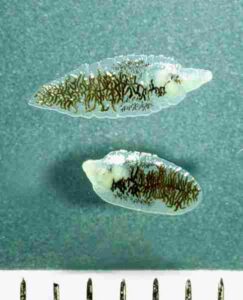
Parasites divert the flow of energy within the ecosystem. This is exemplified by barnacles and their parasitic larvae, which siphon a significant portion of energy away from the total barnacle population.
This redirected energy may then flow into near-shore communities through the parasite larvae, potentially influencing the composition and dynamics of those communities. Such an example demonstrates the interconnectedness of different (especially adjacent) habitats and the role of parasitism in mediating energy transfer between these habitats.
As already shown, parasitism can influence the composition and dynamics of rocky shore communities. When certain shore species are parasitized, it can alter their behavior, abundance or distribution.
For instance, if a parasitic relationship alters the behavior of a predator, it may indirectly affect the abundance and behavior of prey species. These cascading effects can reflect on the structure and dynamics of the entire ecosystem.
Lastly, parasitism can foster adaptation and coevolution between host and parasite species [10]. Over time, the hosts may develop strategies that enable them resist or tolerate parasitic infections, while parasites may evolve more efficient and effective mechanisms for host-exploitation. This evolutionary trend can lead to the specialization and diversification of both hosts and parasites.
Influence of Parasitism on Rocky Shore Species
The influence of parasitism on rocky shore species can include changes in the health, behavior, and abundance of affected organisms.
In some cases, parasitism can lead to increased rate of mortality among host populations, while in others, it may result in changes in host physiology and/or behavior to accommodate or combat the parasites. The specifics of these interactions can vary widely depending on the host-parasite pair involved.
9). Predation in the Rocky Shore Ecosystem (as one of the Rocky Shore Biotic Factors)
Predation is the act and process whereby one organism captures and consumes another for its own sustenance.
It plays a pivotal role in the rocky shore ecosystem, in terms of the composition and dynamics of organisms involved.
This section discusses the significance of predation on rocky shores, as well as its impact on species dynamics.
Importance of Predation in the Rocky Shore Ecosystem
Predation is important in the rocky shore ecosystem, for its roles in population control, species diversification, community structuring, and ecosystem indexing, among others.
Populations of various species in the rocky shore ecosystem, are controlled through the process of predation.
Key predators keep prey populations, including lower organisms like grazers and intertidal filter-feeders, in check. For example, starfish are known to be highly effective predators that consume limpets on the rocky shore.
By regulating the abundance of these herbivores, the predatory starfish contribute to maintaining the balance of the ecosystem.
Through a similar mechanism, predators can influence species diversity in the rock shore ecosystem, namely by preventing the dominance of a single or few species.
The presence of key predators like sea stars, which feed on gastropods [4], prevents any single mollusk specie from becoming too dominant among lower-level organisms. This can lead to increased species diversity and a healthier ecosystem.
Rocky shore community structures can be shaped through predation, in combination with other biotic and abiotic factors.
The predatory activities of some crabs and sea stars, can influence the distribution and abundance of prey species.
Lastly, some predators play a particularly critical role and are referred to as keystone predators.
The purple sea star (Pisaster ochraceus) is an example of a keystone species in the rocky intertidal communities that occur off the northwest coast of North America. This predator feeds on barnacles and mussels, and is responsible for maintaining species diversity in these ecologic communities. In the absence of such keystone predators, the structure of the ecosystem can collapse.
Examples of Predators in the Rocky Shore Ecosystem
Examples of predators in the rocky shore ecosystem are; marine flatworm, purple sea star, whelk, juvenile shore crab (Carcinus maenas), American oystercatcher, and tidepool sculpins.
Starfish, such as the purple sea star; Pisaster ochraceus, are important predators in rocky shore habitats. They feed on a variety of prey organisms, including barnacles and mussels.
Some gastropods, like whelks, are also effective predators, particularly on bivalves, mussels, worms and barnacles.
Shore crabs at the juvenile stage, are known predators on the rocky shore. They feed on a range of organisms, including mollusks, barnacles, amphipods, annelids and small fish. In adulthood, the shore crab is omnivorous [12] with a highly variable diet.
Various fish species, like tidepool sculpins, feed on prey in the intertidal zone.
During low tide, shorebirds like the American oystercatcher, and marine mammals like sea otters may venture into the intertidal zone in order to prey upon exposed organisms.

10). Competition in the Rocky Shore Ecosystem
Competition among organisms in the rocky shore ecosystem, is a pivotal biotic component that influences species interactions, and community dynamics of this unique habitat.
The nature and importance of competition in the rocky shore are discussed below.
Importance of Competition in the Rocky Shore Ecosystem
Competition is important in the rocky shore ecosystem because it contributes to resource allocation, species diversity, adaptive coexistence, community structuring, and tide zone occupation.
The primary resource which sessile (non-moving) organisms compete for in the rocky shore habitat is living space. In this highly competitive environment, sessile organisms, such as algae, barnacles, and mussels, require suitable surfaces on rocks to attach and grow. This implies that the availability of space can be a limiting factor for these organisms.
Competition has a profound impact on the diversity of species on rocky shores. In some communities, this can result in exclusion of less-competitive species with corresponding decrease in diversity.
In other communities however, selective herbivores and predators play a crucial role in the dynamics of competition, by removing dominant competitors (which serve as their preferred food sources). This selective pressure prevents the highly-competitive species from monopolizing the habitat, and supports greater species diversity.
Understanding how distinct species can coexist in the same ecological environment is a fundamental question in competition theory. In the rocky shore habitat, various strategies, including adaptation and niche differentiation, allow multiple species to share the limited space and food resources.
The structure and composition of rocky shore communities are both influenced by competition. For example, if numerous species in a particular community rely on the same resources, intense competition for these resources can occur, potentially leading to niche specialization and resource partitioning.
Lastly, competition also determines the occupation of different tidal zones. Organisms adapt to specific intertidal zones, often on the basis of their competitive abilities and tolerance to environment-related challenges such as desiccation.
Nature of Competition on the Rocky Shore
The nature of competition on the rocky shore is multidimensional, and may be interspecific, intraspecific, mild, intense, simple, complex, constructive or destructive. It is driven solely by the demand for resources like space, light, nutrients, and prey.
Arguably the most prominent form of competition on the rocky shore is concerned with the allocation of living space. Sessile organisms like barnacles, algae and mussels, are dominant shore inhabitants, and must secure space on the rocky substrate for attachment and growth.
Asides space, competition for other critical resources like nutrients and sunlight, also occurs among organisms in the rocky shore. For instance; algae may compete for access to sunlight for their photosynthesis.
Niche differentiation is an effective strategy used by some rocky shore species to reduce direct competition and its negative effects. These organisms adapt to specific niches or microhabitats within the rocky shore, and modify their resource needs as well as consumption patterns, thereby allowing multiple species to coexist.
11). Adaptation in the Rocky Shore Ecosystem (as one of the Rocky Shore Biotic Factors)
Adaptation is a biotic component of the rocky shore ecosystem, which enables organisms to thrive in an environment characterized by daily and seasonal fluctuations in environmental conditions.
Importance of Adaptation in the Rocky Shore Ecosystem
Adaptation is important in the rocky shore ecosystem, for its contributions to organic survival, efficient resource utilization, niche occupation, and resilience.
The rocky shore is subject to significant daily as well as seasonal fluctuations in environmental parameters, including salinity, moisture, wave action, and temperature. Organisms that inhabit this zone must therefore be highly adaptable to tolerate these (often) extreme and rapidly changing conditions.
Adaptation increases the efficiency with which species are able to exploit available resources. Species that can adapt to the conditions of the rocky shore, have a better chance of accessing food resources, such as algae, detritus, and prey; while lower organisms are more likely to avoid predation.
Different intertidal zones offer distinct ecological niches that have varying levels of exposure to environmental stressors. Adaptation enables species to occupy thee specific niches within the rocky shore, thereby reducing the intensity of competition with other species and promoting coexistence.
As stated earlier, adaptive traits improve the resilience of rocky shore species to environmental challenges. Species that possess effective adaptation mechanisms are better equipped to recover from disturbances, such as intense wave action during storm events; or desiccation during low tide.
Environmental Factors That Rocky Shore Species Must Adapt To
Rocky shore species must adapt to four main environmental factors which are; variable salinity, moisture, wave action, and tidal fluctuations
The rocky shore is subject to temperature fluctuations between extreme highs and lows, during daily and seasonal cycles [6]. Adaptations to temperature changes may occur in the form of physiological and structural attributes, as well as behavioral tendencies like the use of burrows in specific times and seasons.
Fluctuations in salinity due to tidal and wave influences is another critical factor on rocky shores. Species adapt to this factor by regulating their osmotic balance, modifying ion transport mechanisms, and developing efficient excretory systems.
Intertidal zones of the rocky shore ecosystem, alternate between submersion and exposure to air, with high and low tide conditions respectively. Organisms inhabiting the ecosystem must therefore adapt to reduce water loss during exposure, and remain aerated during submersion.
Constant wave action can detach and/or destroy shore-dwelling organisms. Adaptations to mitigate the risks associated with such wave action include secure attachment mechanisms, streamlined body shapes, and resistance to intense mechanical stress.
Adaptations of Barnacles on the Rocky Shore
Adaptations of barnacles on the rocky shore include; firm attachment structures, calcareous shells, modified metabolic rates/processes, and water retention capability.
Barnacles attach themselves firmly to rocks using specialized adhesive secretions [8] that enable them withstand tidal and wave impacts. When the tide is out, they are able to seal their shell plates, to prevent desiccation.
To survive prolonged exposure to air, barnacles slow down their metabolic processes, thereby conserving water and energy.
As stated earlier, barnacles have adaptations to retain water within their shells, thereby preventing desiccation. These shells are also designed to withstand mechanical stress and protect the organism from forceful impact.
Conclusion
Rocky shore biotic factors are;
1. Autotrophs
2. Herbivores
3. Carnivores
4. Omnivores
5. Decomposers
6. Mutualism
7. Commensalism
8. Parasitism
9. Predation
10. Competition
11. Adaptation
References
1). Agrawal, A. A.; Klein, C. N. (2000). "What Omnivores Eat: Direct Effects of Induced Plant Resistance on Herbivores and Indirect Consequences for Diet Selection By Omnivores." Journal of Animal Ecology 69(3). Available at: https://doi.org/10.1046/j.1365-2656.2000.00416.x. (Accessed 2 September 2023).
2). Blamey, L. K.; Branch, G. (2009). "Habitat diversity relative to wave action on rocky shores: Implications for the selection of marine protected areas." Aquatic Conservation Marine and Freshwater Ecosystems 19(6):645 - 657. Available at: https://doi.org/10.1002/aqc.1014. (Accessed 2 September 2023).
3). Chryssanthi, A.; Vafeiadou, A.-M.; Chintiroglou, C. C. (2013). "Symbiosis of Sea Anemones and Hermit Crabs in Temperate Seas." Symbiosis: Evolution, Biology and Ecological Effects (pp.95-118). Available at: https://www.researchgate.net/publication/236118088_Symbiosis_of_Sea_Anemones_and_Hermit_Crabs_in_Temperate_Seas. (Accessed 2 September 2023).
4). Feder, H. M. (1963). "Gastropod Defensive Responses and Their Effectiveness in Reducing Predation by Starfishes." Ecology 44(3):721--724. Available at: https://doi.org/10.2307/1932529. (Accessed 2 September 2023).
5). Harley, C. D. G. (2003). "Abiotic stress and herbivory interact to set range limits across a two-dimensional stress gradient." Ecology 84(6):1477-1488. Available at: https://doi.org/10.1890/0012-9658(2003)084[1477:ASAHIT]2.0.CO;2. (Accessed 1 September 2023).
6). Helmuth, B. (1999). "Thermal Biology of Rocky Intertidal Mussels: Quantifying Body Temperatures Using Climatological Data." Ecology 80(1):15-34. Available at: https://doi.org/10.2307/176977. (Accessed 2 September 2023).
7). Levine, M.; Muller-Parker, G. (2012). "Distribution patterns and nutritional contributions of algal symbionts in the sea anemone Anthopleura xanthogrammica." Marine Ecology Progress Series 453:79-94. Available at: https://doi.org/10.3354/meps09602. (Accessed 2 September 2023).
8). Liang, C.; Strickland, J.; Ye, Z.; Wu, W.; Hu, B.; Rittschof, D. (2019). "Biochemistry of Barnacle Adhesion: An Updated Review." Frontiers in Marine Science 6. Available at: https://doi.org/10.3389/fmars.2019.00565. (Accessed 2 September 2023).
9). O'Dwyer, K.; Lynch, A.; Poulin, R. (2014). "Reduced attachment strength of rocky shore gastropods caused by trematode infection." Journal of Experimental Marine Biology and Ecology 458(8):1–5. Available at: https://doi.org/10.1016/j.jembe.2014.04.022. (Accessed 2 September 2023).
10). Penn, D. J. (2001). "Coevolution: Host–Parasite." eLS. Available at: https://doi.org/10.1038/npg.els.0001765. (Accessed 2 September 2023).
11). Scheuerl, T.; Cairns, J.; Becks, L.; Hiltunen, T. (2019). "Predator coevolution and prey trait variability determine species coexistence." The Royal Society, Proceedings of the Royal Society B 286(1902):20190245. Available at: https://doi.org/10.1098/rspb.2019.0245. (Accessed 2 September 2023).
12). Smallegange, I. M.; Van Noordwijk, C. G. E.; van der Meer, J.; van der Veer, H. W. (2009). "Spatial distribution of shore crabs Carcinus maenas in an intertidal environment in relation to their morphology, prey availability and competition." Marine Ecology Progress Series 392:143-155. Available at: https://doi.org/10.3354/meps08263. (Accessed 2 August 2023).
13). Supriatno, B.; Ulfa, K. (2018). "Submerged plant’s ability to present photosynthesis based on oxygen production." Journal of Physics Conference Series 1013(1):012170. Available at: https://doi.org/10.1088/1742-6596/1013/1/012170. (Accessed 2 September 2023).
14). Susilawati, R. (2019). "Bioremediation Experiment Using Hydrocarbon Degrading Bacteria." Jurnal Geologi dan Sumberdaya Mineral 20(1):1. Available at: https://doi.org/10.33332/jgsm.geologi.v20i1.335. (Accessed 2 September 2023).
15). Tokeshi, M. (2006). "On the evolution of commensalism in the Chironomidae." Freshwater Biology 29(3):481 - 489. Available at: https://doi.org/10.1111/j.1365-2427.1993.tb00782.x. (Accessed 2 September 2023).
16). Trowbridge, C. D. (1992). "Mesoherbivory: The ascoglossan sea slug Placida dendritica may contribute to the restricted distribution of its algal host." Marine Ecology Progress Series 83(2-3):207-220. Available at: https://doi.org/10.3354/meps083207. (Accessed 2 September 2023).
17). Umanzor, S.; Ladah, L.; Calderon-Aguilera, L. E.; Zertuche, J. (2018). "Testing the relative importance of intertidal seaweeds as ecosystem engineers across tidal heights." Journal of Experimental Marine Biology and Ecology 511. Available at: https://doi.org/10.1016/j.jembe.2018.11.008. (Accessed 2 September 2023).
18). Veiga, J. P. (2016). "Commensalism, Amensalism, and Synnecrosis." Available at: https://doi.org/10.1016/B978-0-12-800049-6.00189-X. (Accessed 2 September 2023).
